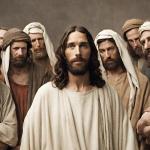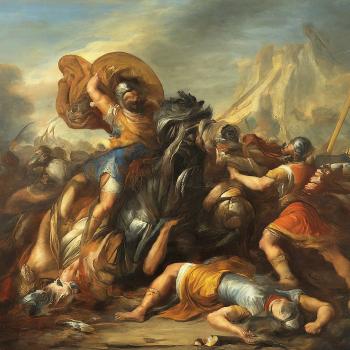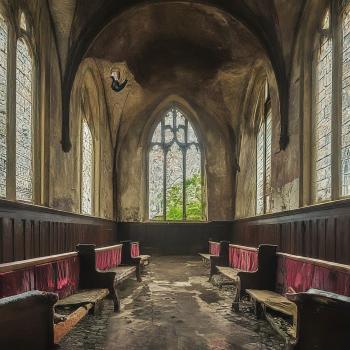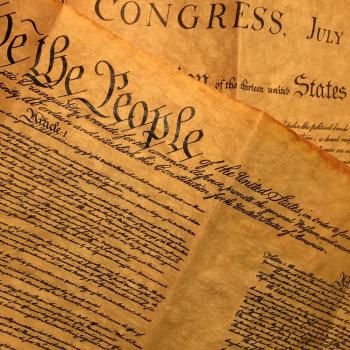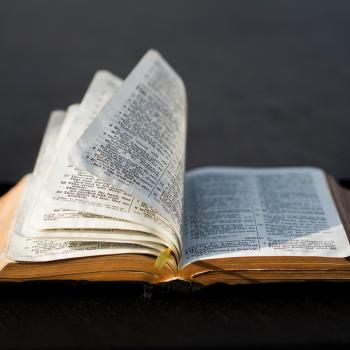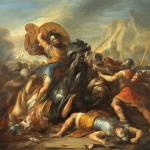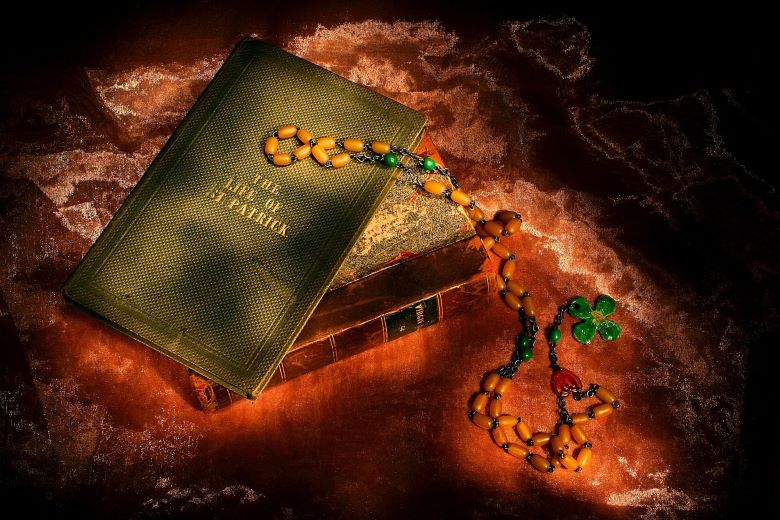
Who was St. Patrick and why do we celebrate his feast day?
Since the fifth and sixth centuries, Ireland has generally recognized three patron Saints, St. Columba (Irish: Colmcille), St. Brigid and St. Patrick. Patrick (Irish Pádraig) is the most well known of these saints outside Ireland itself.
Each of these Patron Saints has a specific characteristics that make them memorable.
St. Columba (Colmcille)
The name Columba is a Latinization of the Irish Gaelic name Comcille. It means Dove of the Church. Columba lived from 521 CE -597 CE.
Born in County Donegal, Colmcille was the great-great-grandson of one of the Irish High Kings, Niall of the Nine Hostages. While he was a monk, Colmcille wrote a book of Psalms and got into a dispute with his publisher which culminated in the Battle of Cul Dremhe in 561. The battle was a massacre on both sides. The case was taken before the High King who ruled in favor of the publisher.
In remorse for the deaths in the battle, Colmcille set out to convert the Picts in Scotland. While in Scotland, Colmcille performed miracles and other memorable acts which included rescuing a nobleman from the Loch Ness Monster.
Colmcille’s feast day is June 9, the recognized day of his death in 597 CE.
St. Brigid (Brigid of Kildare, Brigit, Brid)
Brigid of Kildare’s origins are a bit more obscure.
She is seen in two distinct but related ways.
Known officially as St. Brigid of Kildare (Brigit of Cill Dara), Brigid’s feast day is February 1 or 2, depending on tradition. St. Brigid’s Day is also celebrated in the Church as Candlemas, or the Day of Presentation.
Interestingly, the Feast of Candlemas was superimposed on a pagan festival, Imbolc, which marked the fading of the chill of winter and the promise of the renewal of spring.
Brigid has been associated with Imbolc long before Ireland was Christianized, as was done with many pagan festivals (Yule and Oester or Oestra, for example).
She is seen in the pagan tradition as the patroness of poetry, learning, healing, protection, blacksmithing, livestock and dairy production. In her honor, a perpetual fire was kept ablaze at Kildare for many centuries.
Both the pagan and Christian traditions hold that Brigid was born to a pagan priest (druid) and a Christian slave woman. According to the tradition, she traded her beauty for an opportunity to serve God.
Brigid is remembered today both as the Pagan Priestess of Imbolc and the Saint of the Church.
Her accurate place in history has not been clearly established.
St. Patrick (Pádraig)
St. Patrick (Pádraig in Irish) is, of course, the best known of the Patron Saints of Ireland.
His feast day is celebrated on March 17. St. Patrick’s Day is celebrated in many countries outside Ireland, most notably in the United States.
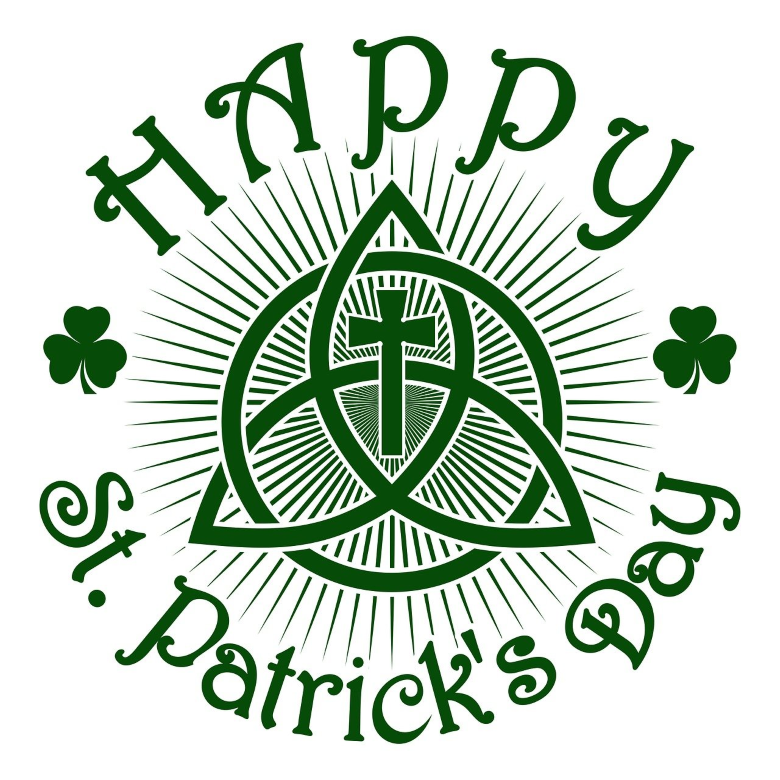
Patrick (387 CE – 461 CE) was not Irish by birth. He was born in Roman Britain and captured at around the age of 14 by pirates from Ireland and was taken to Ireland as a slave to tend sheep.
In his time, Ireland was primarily a Pagan land which kept the old ways and Druids were still far more numerous than Catholic priests. Patrick turned to his faith and wrote his memoir, Confessions.
Patrick escaped captivity and returned to England where he, himself, became a priest.
Following his ordination, he returned to Ireland where he set out to convert the Pagans in the northern and western counties.
The traditions of the Church hold that Patrick became a bishop but dates and details have not yet been established.
What are the legends of St. Patrick?
Tradition says that Patrick preached to and converted Pagans all around Ireland, famously using the shamrock to explain the Trinity. (How the three-lobed shamrock has been confused with the four-leaf-clover over time and space is a testament to our willingness to place new ideas within pre-conceived categories.)
A somewhat questionable legend has emerged that Patrick ran all the snakes out of Ireland. To add to the confusion surrounding this claim is that the earliest text (seventh century) mentioning a saint running the snakes out of Ireland is a story about St. Columba.
Patrick is believed to be buried in Down Cathedral, Downpatrick. His grave was marked in 1990 with a granite stone.
How do we celebrate St. Patrick today?
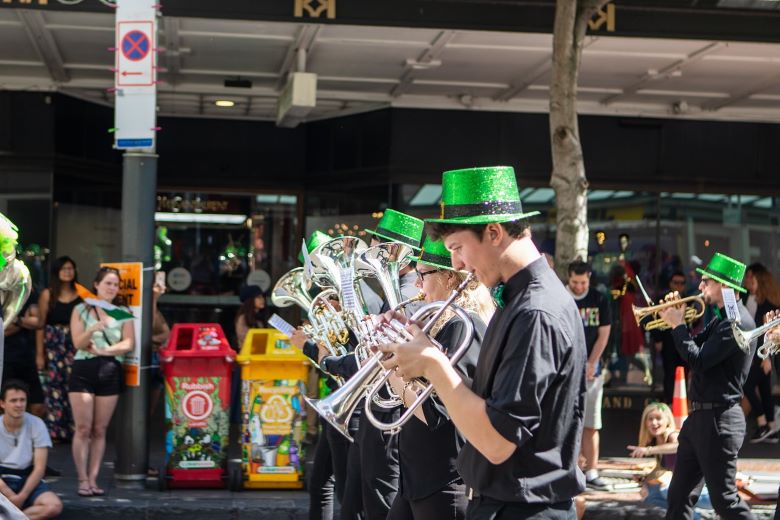
March 17 is celebrated as the (Catholic) Feast Day of St. Patrick or (secular) St. Patrick’s Day.
St. Patrick’s Day is celebrated all over the world by Irish people and by people who claim Irish ancestry. Celebrations are held in Ireland, in the U.S., in Canada, in Australia and New Zealand and in other places in the world.
People, communities, cities and organizations wear green clothing, display shamrocks (and four-leaf-clovers too), hold parades, parties, music festivals and also do extreme things like dying rivers green in downtown areas.
Like many once solemn religious occasions, the Feast of St. Patrick has been converted into a secular day of recognition of Ireland’s conversion to Christianity, the resilience of Irish people and drinking…lots of drinking.



